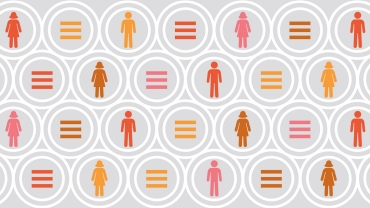
Uber (the car sharing platform) continues to expand globally, and currently is available in over 60 Countries and 400 Cities. With job flexibility becoming a key factor when deciding what jobs or industries to work in, Uber offers a highly flexible working model, where drivers can choose their own working time to juggle with other commitments.
More women are signing up to be drivers on various car-sharing platforms, and so it was a surprise in a recent article to learn than female Uber drivers earn 7% less on average than their male counterparts.
How can this be?
Uber use sophisticated algorithms to match fares with available drivers, so how can there be this significant earnings gap. Some recent research highlighted the following reasons for this pay inequality:
- Men have more experience of being an Uber driver than women (77% of women quit the driving platform after 6 months vs 65% men). This additional time in role; and learned knowledge, means men are strategically better at deciding which fares to accept (leading to higher income).
- Men drive 2.2% faster which means a higher return per trip and lower downtime between trips.
- Differences in where people choose to drive, with men driving more in locations with shorter wait times and higher surge multipliers.
The importance of micro-inequalities
The Uber case study demonstrates how pay differences between men and women are rooted in daily micro-inequalities, tiny actions that frequently occur, and then over time add up to inequalities on a broader scale, in this case, unequal pay for what appears on the surface to be equal work.
Examples of micro-inequalities include:
- Interrupting a person mid-sentence
- Taking more questions from men than women
- Constantly mispronouncing a persons name
Most micro-inequalities occur unconsciously, and are hard to recognize for victims, perpetrators and bystanders as they occur unconsciously.
Overcoming micro-inequalities
Mitigating unconscious bias takes conscious effort and action to “rewire” our brains. Here are some suggestions and proposals of how to mitigate potential unconscious bias, which can lead to pay inequalities.
- Bust the affinity bias affect, we all are naturally drawn to people who are similar to us, our background, education, race, thinking style…. This could lead to offering higher salaries to mini-mes (someone who has similar attributes to you, regarding for example, education, family values, political beliefs etc.). To overcome this, ensure you calibrate pay increases with performance ratings across whole departments, and benchmark with an internal colleague to ensure pay equity.
- Challenge colleagues to make sure they pay men and women equally – a tip could be to create a chart with all employees along the x-axis, rated lowest to highest paid from left to right. Use different colours for men and women to visually call out any potential unconscious bias in play (are men clustered towards the left hand side of the chart or vice versa).
- Roles with profit and loss accountability e.g. sales, operations, finance, tend to be the feeder roles to C-Suite jobs vs Staff roles with high levels of people responsibility e.g. HR, Public Affairs, Marketing. Review your talent pipeline to ensure candidate pools for all jobs are gender balanced, and put in place action plans where equal numbers of qualified candidates are not available.
Conclusion
In an ideal world, micro-inequalities would not exist, we would treat everyone equally and fairly on an unconscious and conscious level. In the real world however, micro-inequalities, formed and reinforced through social stereotypes, personal beliefs, media messages to name a few, can lead to differences in how we treat people. Tools such as calibration, standardized templates, group decision making can all mitigate these effects and help foster an Inclusive workplace.
Summary
- Micro-inequalities, tiny actions that frequently occur, add up over time and become inequalities on a broader scale.
- Most micro-inequalities occur unconsciously, and are hard to recognize for victims, perpetrators and bystanders as they occur unconsciously.
- Mitigating unconscious bias takes conscious effort and action to “rewire” our brains. Tools such as calibration, standardized templates, group decision making can all mitigate these effects and help foster an Inclusive workplace.








